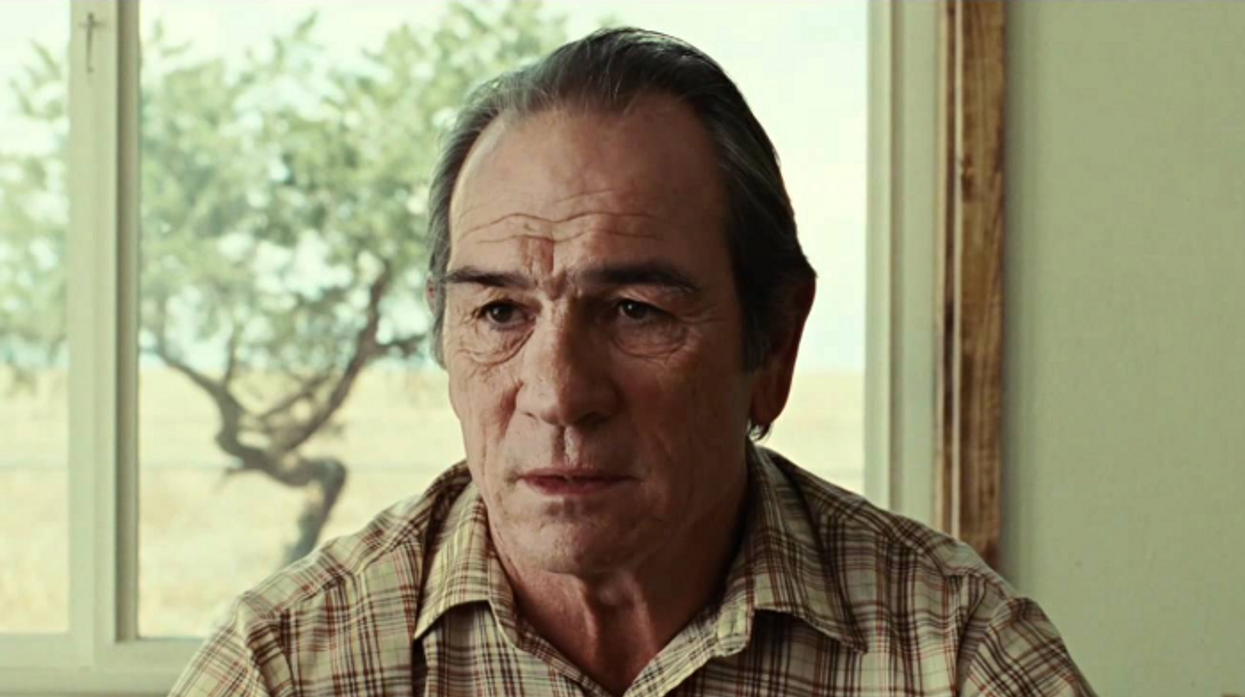Watch: Here's How to End a Movie, Coen Brothers Style
Let's see how the endings of the Coen brothers' films both subvert and satisfy the traditional requirements of narrative.

When it comes to movies, endings are one of the most difficult parts to get right. This is no less true for seasoned filmmakers. After all, what constitutes a good ending?
In the video below from Entertain the Elk, we take a look at the endings of several Coen Brothers movies in an attempt to show how the filmmakers have made use of two kinds of ending, what he calls "Bookends" and "Abstracts." (Warning: There Will Be Spoilers!)
The Ending, Well Done
Chekhov said that the last 90-seconds of a play were the most important, and in the video, Elk quotes John Truby, who wrote that "the final scene is the ultimate convergence point," as well a "miniature of the entire story." In an ideal ending, the text and subtext of a film are resolved; that is, the conflict is resolved (the text) while at the same time, the larger themes are reinforced (subtext).
Done well, this causes a revelation in the mind of the audience, and the ending satisfies both the head and heart, or the text and subtext, if you will. As Elk puts it, "the final scene of a movie should be a microcosm for the larger story as a whole. It reminds the audience what the film is about and gives them something to wrestle with....after the eventual fade to black."
"The final scene of a movie should be a microcosm for the larger story as a whole."
Coen Ending #1: The Bookend
In the "Bookend" ending, the film begins and ends in a similar fashion. This brings the characters full circle, "by putting them in a similar situation or conflict, and by doing so reveals the characters change or growth." These can be visual, such as the repetition of a location or item.
In Burn After Reading, it's the use of CIA headquarters, where both times (here's the beginning) we see the heights of "confusion and absurdity," two words that could describe much of the action in the film.
In O Brother, Where Art Thou? ,the song of the chain-gang at the beginning is mirrored by the song sung at the end by Ulysses' daughters, which highlights the length of his odyssey back to his family.
Similarly, in Inside Llewyn Davis, a film about a hapless folk singer, the beginning/ending is also musical. The film opens with Llewyn onstage, singing about death and loss, and ends with a young Bob Dylan on the same stage, while outside in the alley, Llewyn sits battered and bleeding, watching. In both cases, we see the film come full circle.
The Coens' favorite way to bookend their films, though, according to Elk, is through the use of narration. In their work, they use a first-person narration where a character, usually the protagonist, relays information to the audience, setting up the world, and their character, and at the end, sums things up. Raising Arizona (here's the beginning) provides one of the best examples.
Coen Ending #2: Abstracts
The other sort of ending, what he calls the "Abstract," comes about when the Coen brothers use the final scenes of their films to "cement the tone and theme and breathe life into the world of the story." These are the endings that audiences often find somewhat confounding, as many did with the anticlimactic ending of Fargo, where the Gundersons discuss stamps. This scene, though, "perfectly reinforces the dark, comedic tone of the film, and makes these characters feel like flesh and blood people."
These endings give the viewer the idea that the film doesn't just end with the plot, but rather, continues on in a world that exists outside of the film. Other examples of Coen movies with this sort of ending are Blood Simple, Barton Fink, and A Serious Man. These sorts of endings, "force the audience to wrestle with the entire story as they search for answers."
For Elk, the most apposite example of a Coen brothers ending happens to be both a Bookend and an Abstract, taking place in the final scene of No Country for Old Men. The film opens with Sheriff Ed Tom's narration as we oversee the landscapes of West Texas.
Even though he's not providing narration over the final scene, Tom's long monologue to his wife about a dream he's had, is, in Elk's opinion, the equivalent. It also displays the character change in Ed Tom, who is now "retired, lost, and hopeless about the raging war of good and evil in America." It's the content of his dream, about riding in the mountains, that makes up, in Elk's view, "the abstract element in this scene."
When he first saw the film, Elk found the ending to be unsatisfying, since for him the film had been about the "cat-and-mouse game" between Moss and Chigurh. What he realized, though, was that "this is Ed Tom Bell's story. He's the bookend character" and because of that bookend, we can see that he's also the only character to undergo anything resembling change (Moss dies from his inability to change, and Chigurh never changes).
The long ending of the film, following Ed Tom around, breathes life into the world of the story, "reminding the audience that the world of the story, and these characters, live on." The Coen bros. films are deceptively complex, and this video is a good look at the ways in which they both create and manipulate worlds for their audiences.
Source: Entertain the Elk











